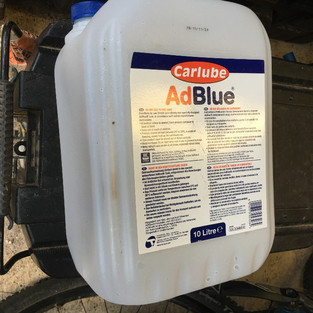DIY adding inhibitor to a central heating system. Plumber needed? Let’s see..
- oldmanwith
- Dec 7, 2020
- 6 min read

I was getting a bit of noise from my boiler..... There are many noises your heating system might make, some you can fix, some you’re probably going to need a plumber or heating engineer, some you won’t be able to fix at all.
Kettling
In my instance the noise was kettling, similar to the sound a kettle makes when it’s boiling, especially when it’s been boiling the water for your coffee or tea a few times a day for a couple of years. Limescale, sludge, corrosion, debris builds up in your heating system over time and slows down the flow resulting in the water boiling inside the boiler. Despite its name, your boiler shouldn’t actually boil water but if and when it does, it makes noises like a kettle! Don’t use it to make tea or coffee though, that would be bad.
Ticking sounds
Rapid clicking a bit like a clock ticking but quite often starting slow and speeding up as the heat rises is often the pipes or radiators expanding as they heat up. If it’s pipes there’s often little you can do about it. If it’s pipes under the floor you can’t get to them to find what they’re rubbing against. If it’s the radiators themselves there’s a slim chance you might be able to fix it. Where the radiator hangs on the bracket there should be a little plastic widget that sits in the bracket and allows the radiator to move about a little without it being metal to metal. When I checked my rads, out of 10 in my house none had all 4 inserts and some had none! Look on google for radiator bracket inserts, I think mine came from eBay. Caution: you have to remove the radiator to fit them, I’ll do another post on that.
Clicks of valves turning on and off in the boiler or motors on valves whirring
If your system has always made the sounds and it works ok then it’s probably just noise. But if it’s new or somethings not working right, call an engineer.
Rumbling or constant (ish) drone of the pump running
Again, if this hasn't changed percebtibly over your memory and the heating is working ok then your pump is probably ok. Ours started rumbling louder on a gradual basis over a winter period about 6 or 7 years ago and eventually it became irritating. I'll say at that point the heating didn't seem to be working any less well but we had it replaced to get rid of the noise. We paid a heating engineer to do it. I could have done it myself but I was busy with my "day" job at the time.
So going back to my “kettling” sounds
An important point here; because I know my system and I don’t know yours I’m not telling you that you should or should not attempt this. I’m simply telling you what I did on my system. You may need a different treatment fluid or different work carried out.
I had a quick glance at the Ideal Boilers website earlier which says : There are some ways you can prevent or cure kettling, but none of them are DIY jobs – always make sure you use a Gas Safe engineer to fix your boiler.
So in my case I got some Sentinel X200 Noise Reducer and prepared to put it in the system...
My system - vented
My heating system is a traditional vented system which means it has a tank in the loft space that holds the water that expands from the system. This tank, invariably called the header or expansion tank can be used to put the treatment ( a liquid) into the system but it means you have to drain enough water out of the system to empty the tank and allow the treatment to flow into the pipework.
There’s another way.
How I put the treatment into my heating system
If you part drain a radiator (a heated towel rail is ideal if you have one) you can put the treatment into the vent port of the radiator. Less draining down, less mess (in theory), no need to climb into the loft and you know the treatment has gone straight into the system. Normally there’s a radiator in the system that has two manual valves where all the others have one and a thermostatic valve. This rad is a good choice and it’s often in the bathroom.
There’s a couple of prerequisites for this job being “easy”, you need radiators with a drain point built into one of the valves, that’s pretty standard these days but that wasn’t always the case. I’ll talk about this more later in the post.

As you can see my towel rail has the radiator valve vertical, on a standard radiator it will be horizontal, it doesn’t matter.
Tools needed
For this job I needed the following tools, if you click on the tool name it will take you to an Amazon link.
As an Amazon Associate I earn from qualifying purchases and the ASA requires me to tell you the page is considered an advertisement:
Small adjustable spanner (grips will do but mind you don't scratch up the chrome on the valves)
Bucket (ideally one without a split in it, see further down......)
Hose of correct size and long enough to go from the drain point into the bucket
Towel / cloth / wipes
Bottle of treatment (in this instance Sentinel X200 Noise reducer)
Catch tray Not the one I use and I've never tried it but it looks ok
Doing the job
First off I waited until the radiator was cool and put towels on the floor!!
I turned off both radiator valves, then got ready with the hose and I loosened the bleed screw on the drain point. I got a small amount (maybe 1/2 a cup) of water onto the towel before I got the hose onto the drain point.
Next the flow of water into the bucket stopped, this is due to a vacuum creating in the radiator so I had to loosen the air bleed valve at the top to let air in and more water out. This doesn’t always happen so you need to be ready to pull the hose off and re-tighten the bottom drain valve if the bucket starts getting full.
DRAMA
A small moment out at this point to illustrate how things can go wrong. I was waiting for the rad to drain into the bucket and it was really slow or so I thought. I’d taken off my shoes so I was in socks and it suddenly felt like my foot was wet.
Yup, the bucket had about a 30mm split in the side at the base so as fast as I drained the rad into the bucket it spilled out over the floor......
Fortunately I’d got towels down and the floor is water resistant laminate for bathrooms but there was a small amount of “excited” language.

Back to the work
Having drained enough water from the rad I closed the drain valve and took the hose and bucket away. Then I took out the whole vent plug from the top of the rad and fitted the Flomasta Universal Filling Kit. I’d previously modified this to work better, more detail below.
Once the filling kit was connected I hooked up the bottle of treatment and tipped it in. A minute or so for the full bottle to drain in and it was done. Remove the bottle and filling kit, then replace the vent plug and tighten the bleed screw. Turn the radiator valves on again and open the air bleed screw to vent of the air until the radiator is full of water.
Job done
The modified filling kit
I’ve done two modifications to the Flomaster Universal Filling Kit
I fitted a longer hose between the two connectors because the 80mm long hose that it came with didn’t give enough length to attach the treatment bottle the right way up. Also when the bottle was tipped sideways the hose was too loose and leaked.


I fitted a seal washer to the bottle adaptor because it came without one and the treatment fluid would leak from the cap when I upturned the bottle. I used the one from the X200 bottle cap, all I had to do was put a hole in it. If I was doing it regularly I’d convert an empty bottle to a funnel by cutting the base out and seal the adaptor on.

Radiators without drain off valves
If my rads didn’t have drain valves I would still have done it this way it’s just more of a pain to drain water from the rad. I would have had to put a catch tray under the joint between a radiator valve and the radiator and the loosen the union nut. Other than that the process is pretty much the same.

For a catch tray I have an old school science lab tray but an oil draining tray from Halfords, a big roasting dish from the supermarket, plastic milk bottles, plastic containers will all work, just cut a hole in the side of them if they're bottles.
Pressurised systems
One of my family has a pressurised system which has a pressure vessel instead of a header tank to take up any water expansion. His boiler has a little pressure gauge on the front of it to show the current system pressure. The procedure on his was exactly the same except that finally when the radiator is refilled, the system pressure has to be “topped up” from the cold water mains. I might cover this in a later post











Comments